Abstract
A mortality study of workers employed for at least one year between 1 January 1950 and 31 December 1975 at oil distribution centres from three oil companies in Britain has been carried out. Ninety nine per cent of the population were successfully traced to determine their vital status at 31 December 1975. The mortality observed in the study population was compared with that which would be expected from the mortality rates for all the male population of England and Wales. The overall mortality observed was considerably lower than expected on this basis as was the mortality from stroke, hypertensive disease, bronchitis, and pneumonia. The observed number of deaths from all neoplasms was also much less than expected as were the observed deaths from lung cancer. The observed deaths from ischaemic heart disease approximately equalled those expected overall and in each of the companies, however, and there was no evidence of a "healthy worker effect" for this disease group. The ratio of observed over expected deaths from ischaemic heart disease tended to decrease with increasing age at death, and for most of the job groups overall, the observed and expected deaths were about the same. Raised mortality patterns from ischaemic heart disease were found in several subgroups of the population of one company. Mortality from myelofibrosis and diseases of the lymphatic and haematopoietic tissue was slightly raised overall. Only myelofibrosis showed an overall excess but raised mortality was found in subgroups of the population defined by company, job, and length of service in several of the other neoplasms making up this disease group. The numbers of deaths from these causes were all small, making it difficult to exclude chance effects. Further work would be required to ascertain whether these results are due to an occupational factor and if so to identify the physical or chemical nature of the risk.
Full text
PDF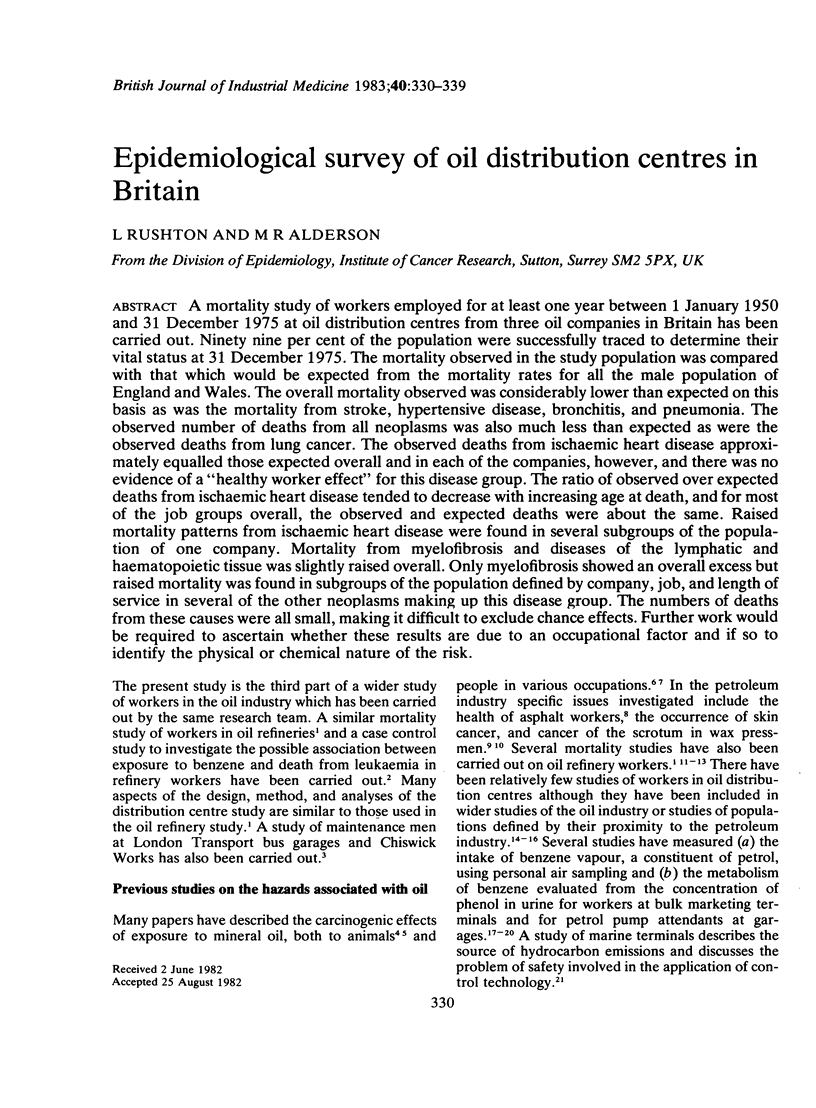
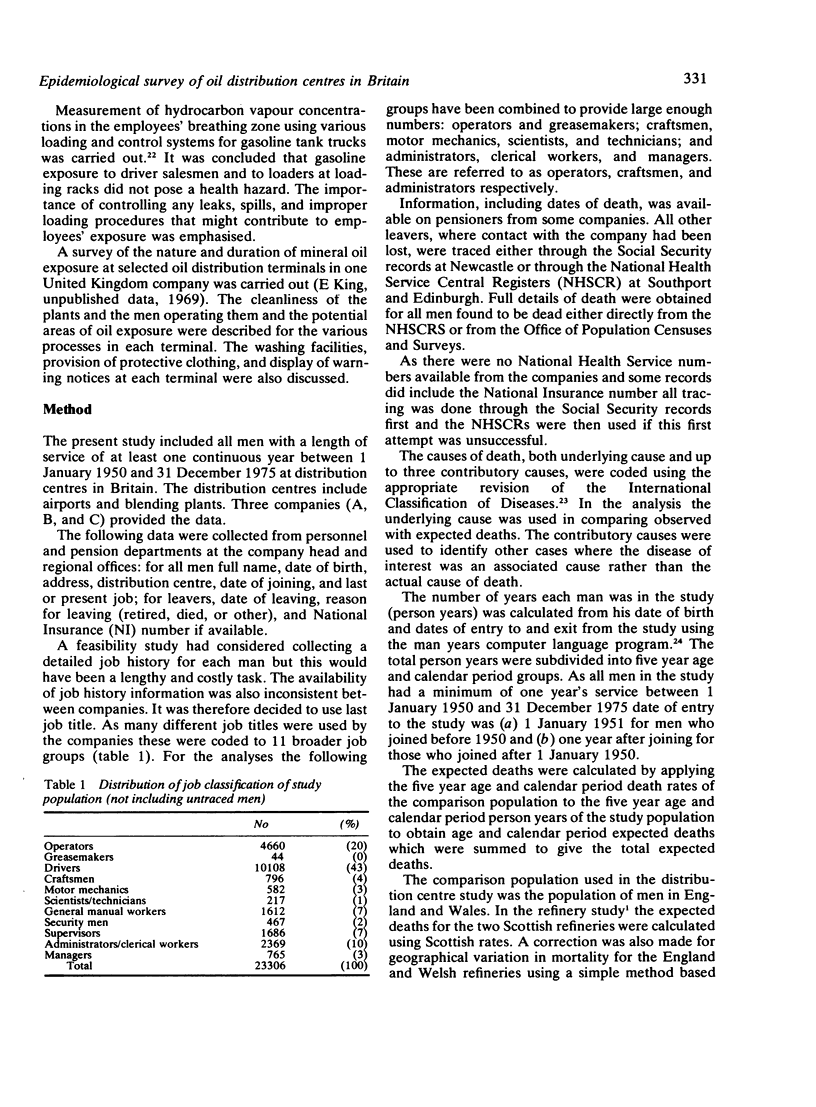
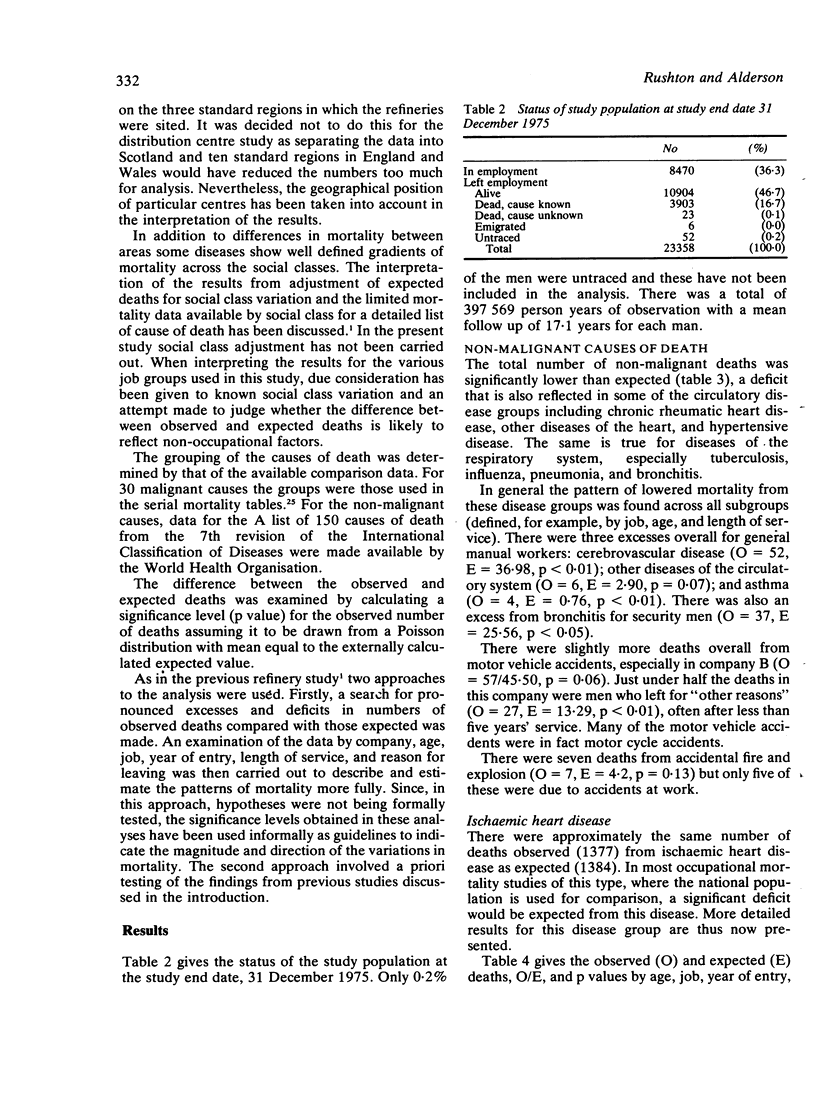
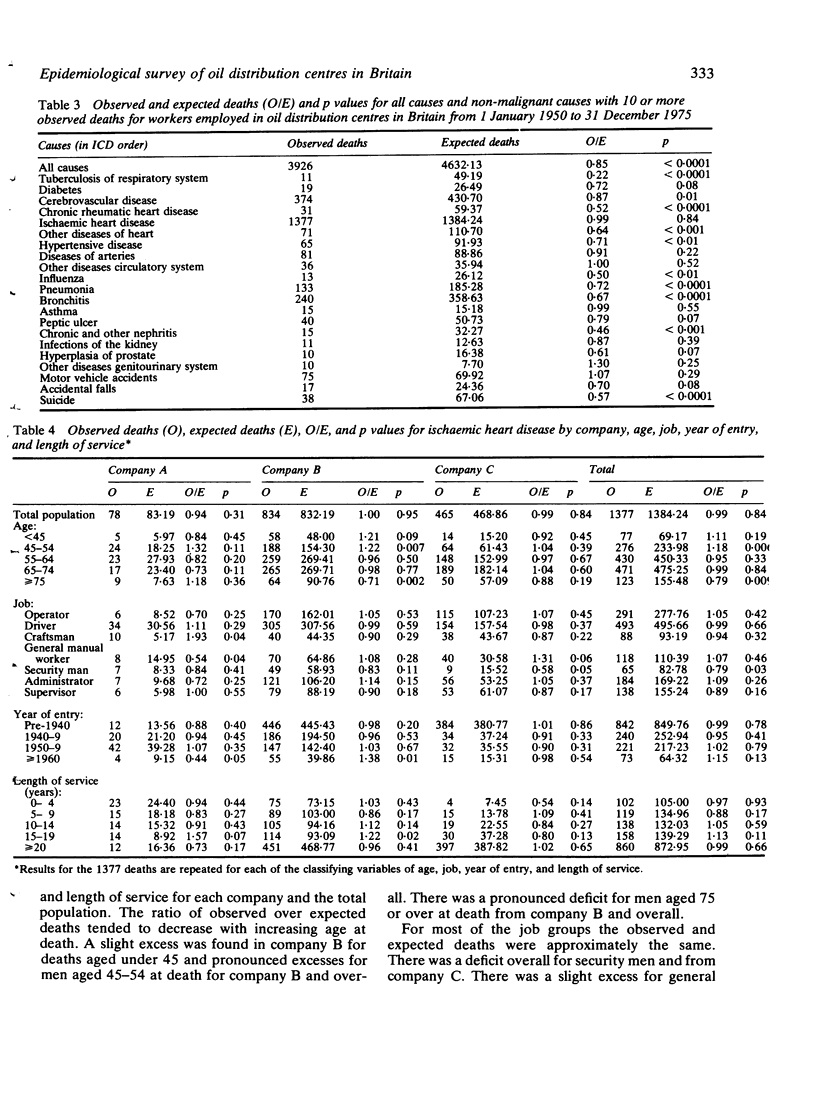
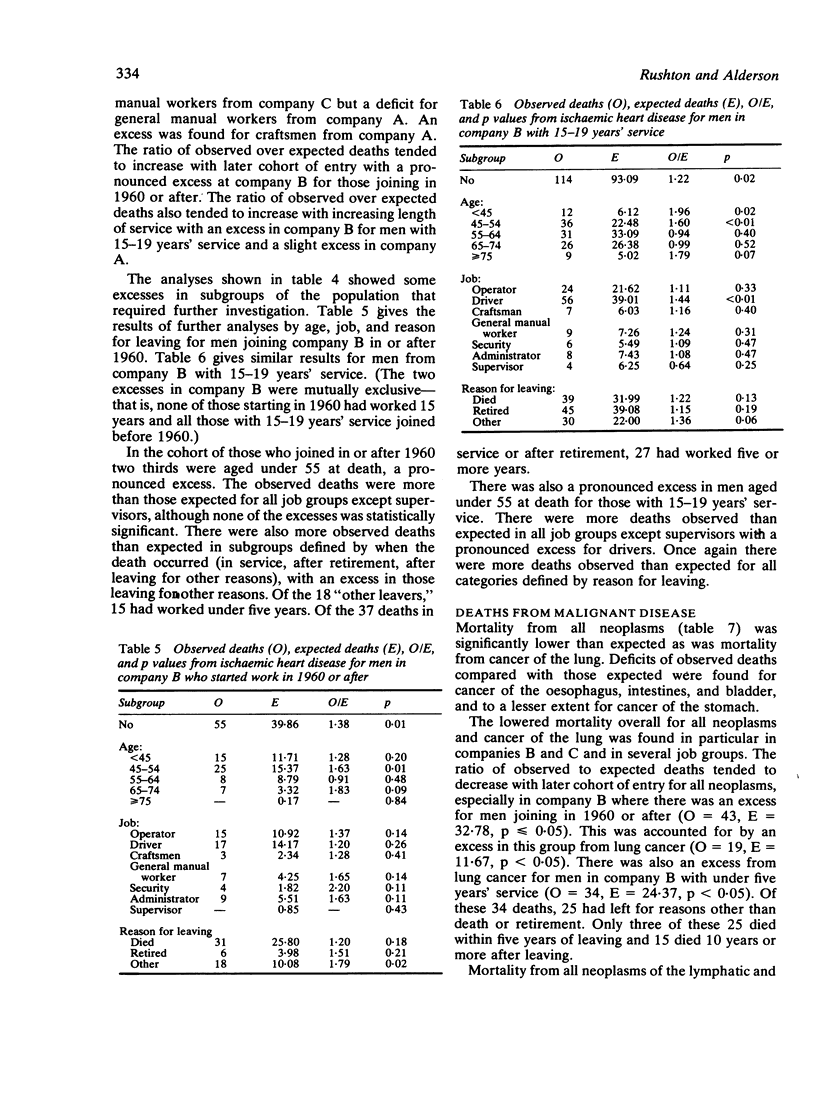
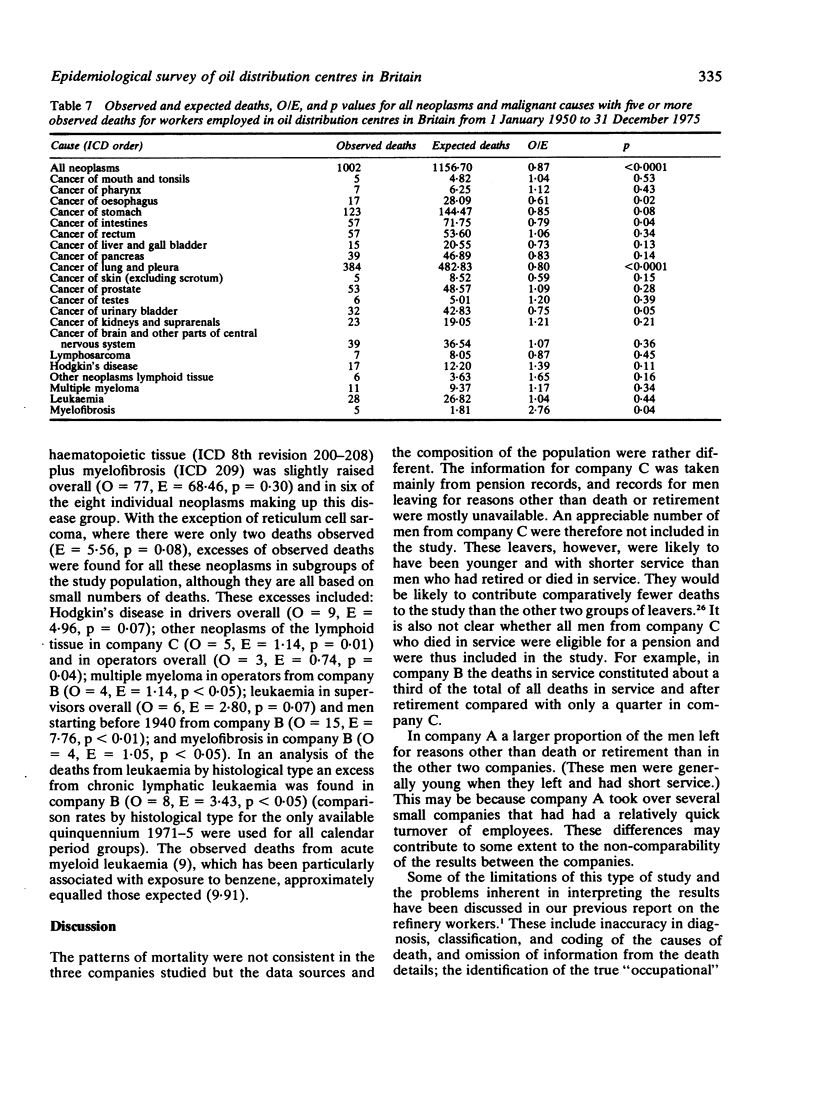
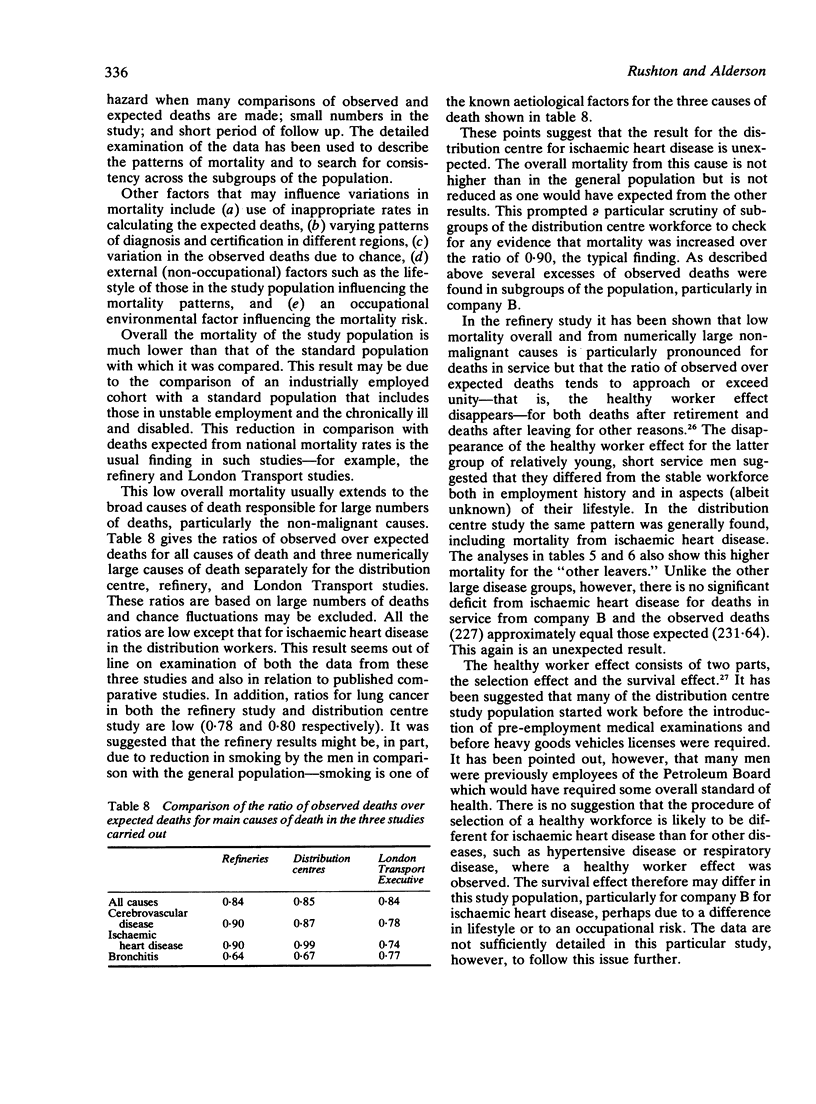
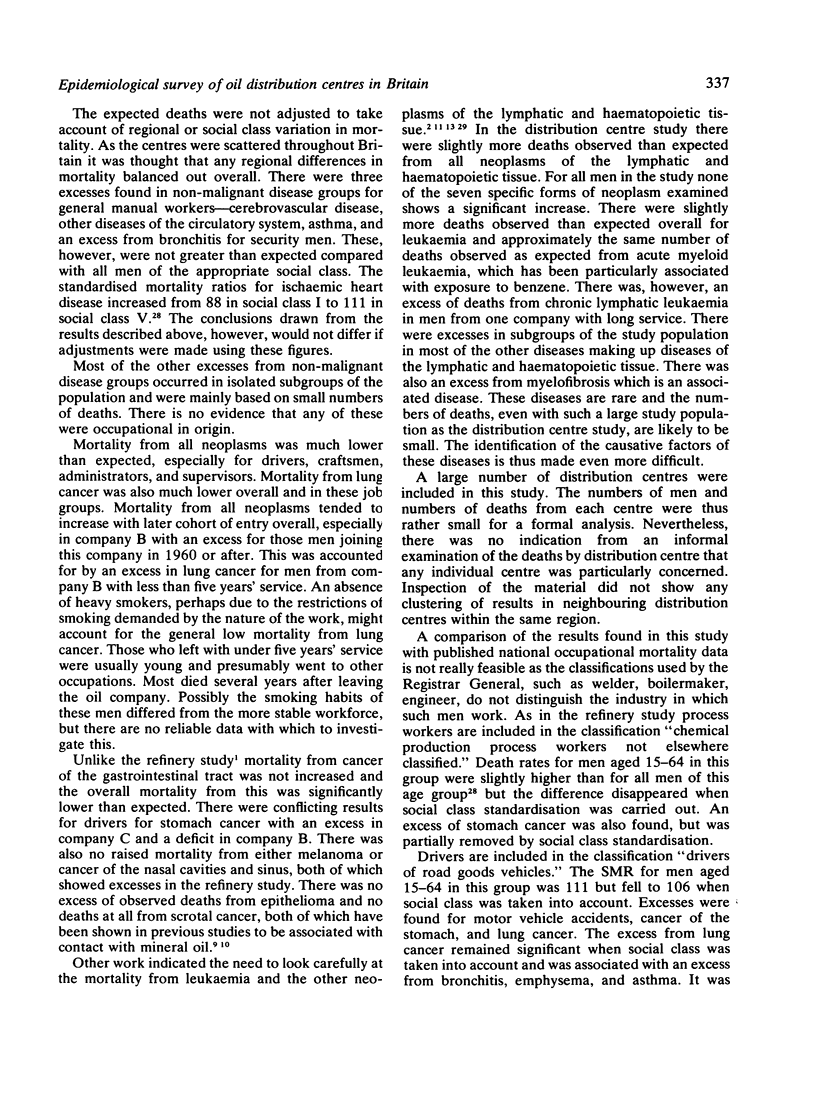
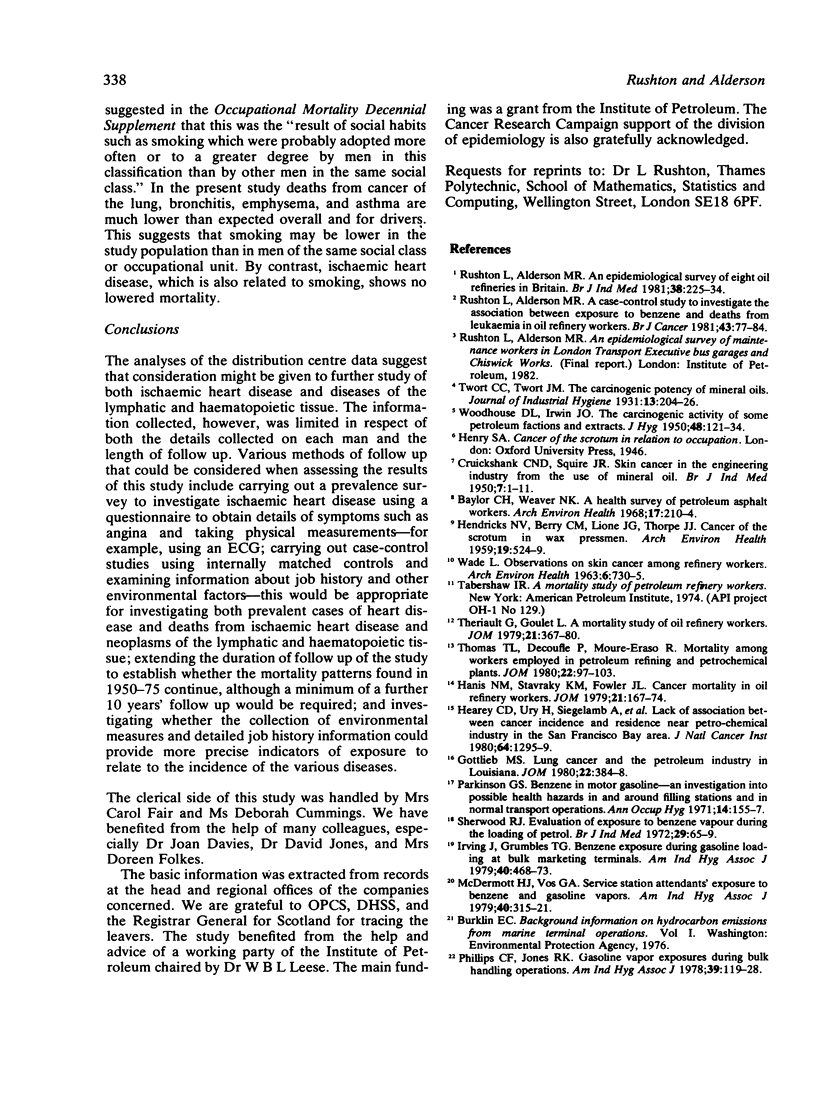
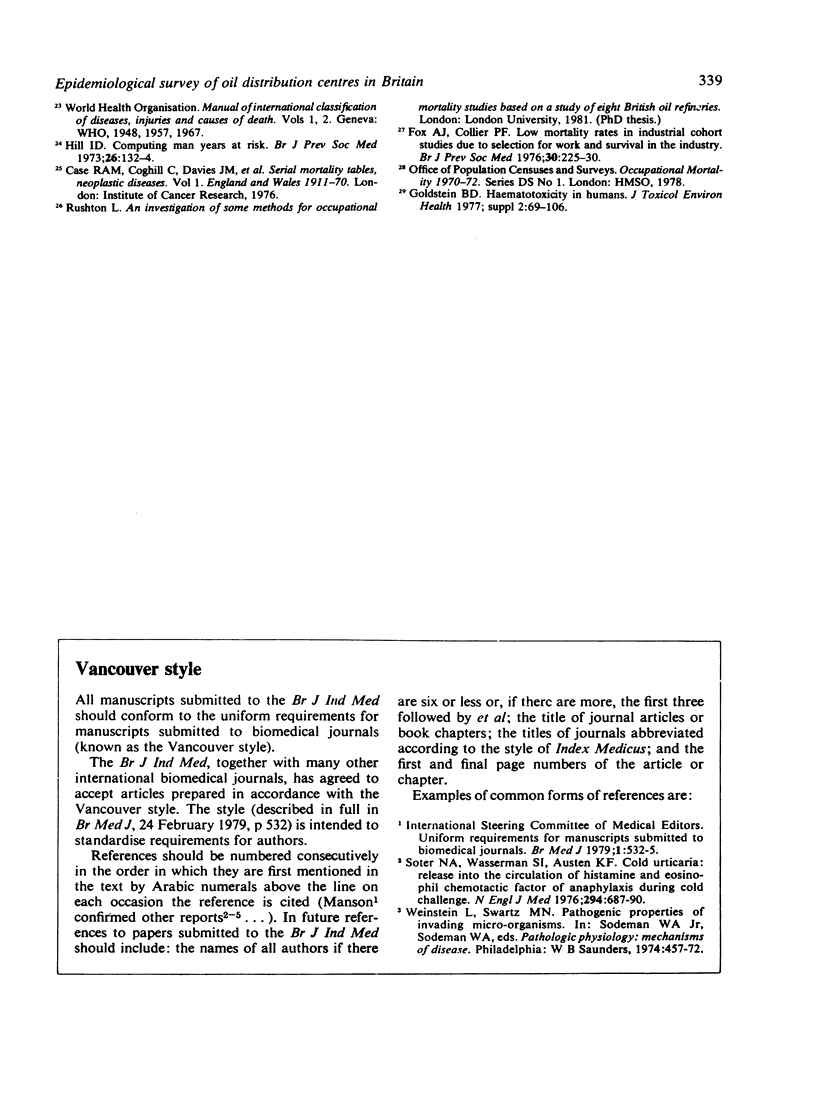
Selected References
These references are in PubMed. This may not be the complete list of references from this article.
- Baylor C. H., Weaver N. K. A health survey of petroleum asphalt workers. Arch Environ Health. 1968 Aug;17(2):210–214. doi: 10.1080/00039896.1968.10665215. [DOI] [PubMed] [Google Scholar]
- CRUICKSHANK C. N. D., SQUIRE J. R. Skin cancer in the engineering industry from the use of mineral oil. Br J Ind Med. 1950 Jan;7(1):1–11. doi: 10.1136/oem.7.1.1. [DOI] [PMC free article] [PubMed] [Google Scholar]
- Fox A. J., Collier P. F. Low mortality rates in industrial cohort studies due to selection for work and survival in the industry. Br J Prev Soc Med. 1976 Dec;30(4):225–230. doi: 10.1136/jech.30.4.225. [DOI] [PMC free article] [PubMed] [Google Scholar]
- Gottlieb M. S. Lung cancer and the petroleum industry in Louisiana. J Occup Med. 1980 Jun;22(6):384–388. [PubMed] [Google Scholar]
- HENDRICKS N. V., BERRY C. M., LIONE J. G., THORPE J. J. Cancer of the scrotum in wax pressmen. I. Epidemiology. AMA Arch Ind Health. 1959 May;19(5):524–529. [PubMed] [Google Scholar]
- Hanis N. M., Stavraky K. M., Fowler J. L. Cancer mortality in oil refinery workers. J Occup Med. 1979 Mar;21(3):167–174. [PubMed] [Google Scholar]
- Hearey C. D., Ury H., Siegelaub A., Ho M. K., Salomon H., Cella R. L. Lack of association between cancer incidence and residence near petrochemical industry in the San Francisco Bay area. J Natl Cancer Inst. 1980 Jun;64(6):1295–1299. doi: 10.1093/jnci/64.6.1295. [DOI] [PubMed] [Google Scholar]
- Hill I. D. Computing man years at risk. Br J Prev Soc Med. 1972 May;26(2):132–134. doi: 10.1136/jech.26.2.132. [DOI] [PMC free article] [PubMed] [Google Scholar]
- Irving W. S., Jr, Grumbles T. G. Benzene exposures during gasoline loading at bulk marketing terminals. Am Ind Hyg Assoc J. 1979 Jun;40(6):468–473. doi: 10.1080/15298667991429840. [DOI] [PubMed] [Google Scholar]
- McDermott H. J., Vos G. A. Service station attendants' exposure to benzene and gasoline vapors. Am Ind Hyg Assoc J. 1979 Apr;40(4):315–321. doi: 10.1080/15298667991429642. [DOI] [PubMed] [Google Scholar]
- Rushton L., Alderson M. R. A case-control study to investigate the association between exposure to benzene and deaths from leukaemia in oil refinery workers. Br J Cancer. 1981 Jan;43(1):77–84. doi: 10.1038/bjc.1981.11. [DOI] [PMC free article] [PubMed] [Google Scholar]
- Rushton L., Alderson M. R. An epidemiological survey of eight oil refineries in Britain. Br J Ind Med. 1981 Aug;38(3):225–234. doi: 10.1136/oem.38.3.225. [DOI] [PMC free article] [PubMed] [Google Scholar]
- Soter N. A., Wasserman S. I., Austen K. F. Cold urticaria: release into the circulation of histamine and eosinophil chemotactic factor of anaphylaxis during cold challenge. N Engl J Med. 1976 Mar 25;294(13):687–690. doi: 10.1056/NEJM197603252941302. [DOI] [PubMed] [Google Scholar]
- Thomas T. L., Decoufle P., Moure-Eraso R. Mortality among workers employed in petroleum refining and petrochemical plants. J Occup Med. 1980 Feb;22(2):97–103. doi: 10.1097/00043764-198002000-00007. [DOI] [PubMed] [Google Scholar]
- Thériault G., Goulet L. A mortality study of oil refinery workers. J Occup Med. 1979 May;21(5):367–370. [PubMed] [Google Scholar]


